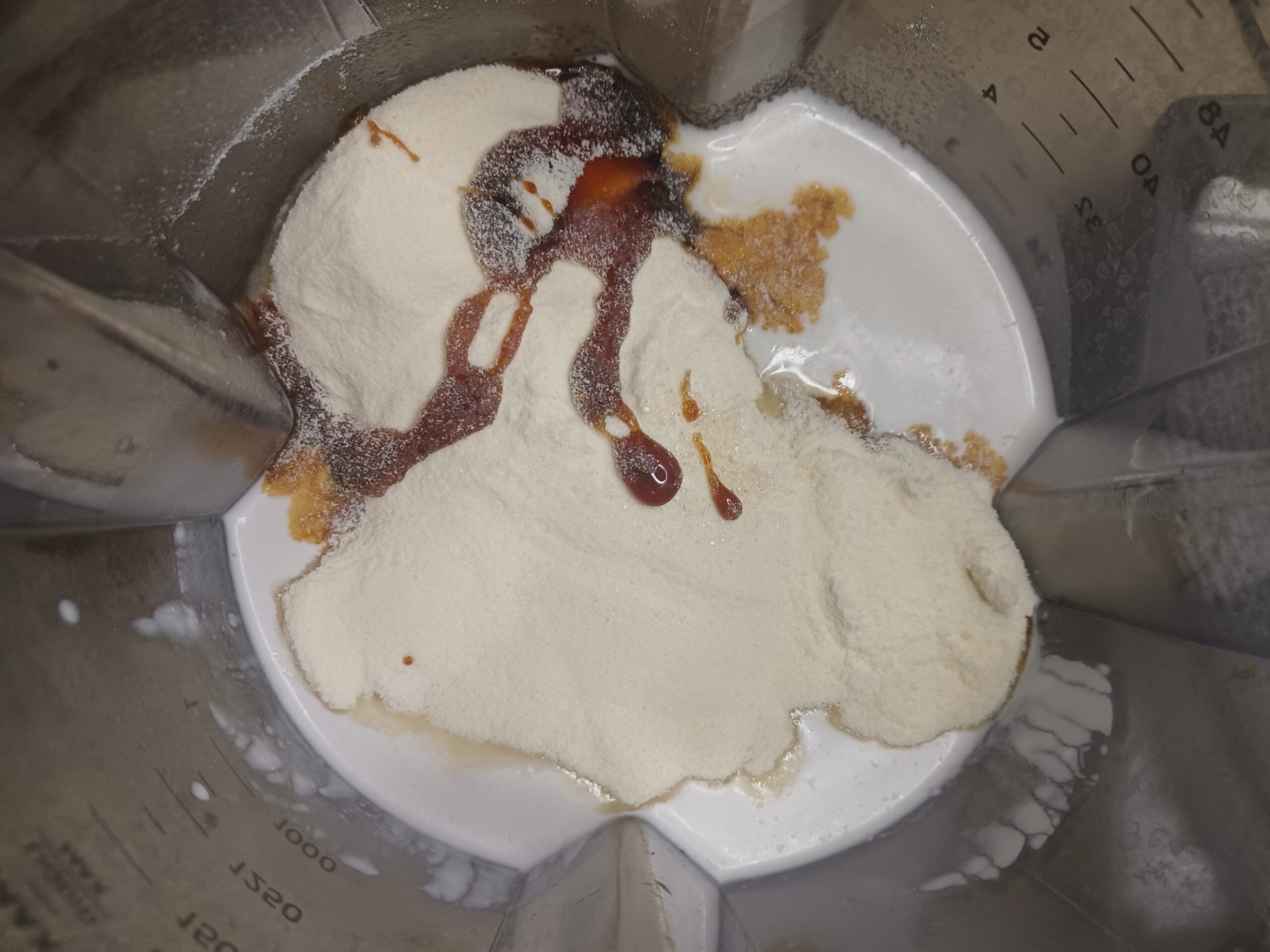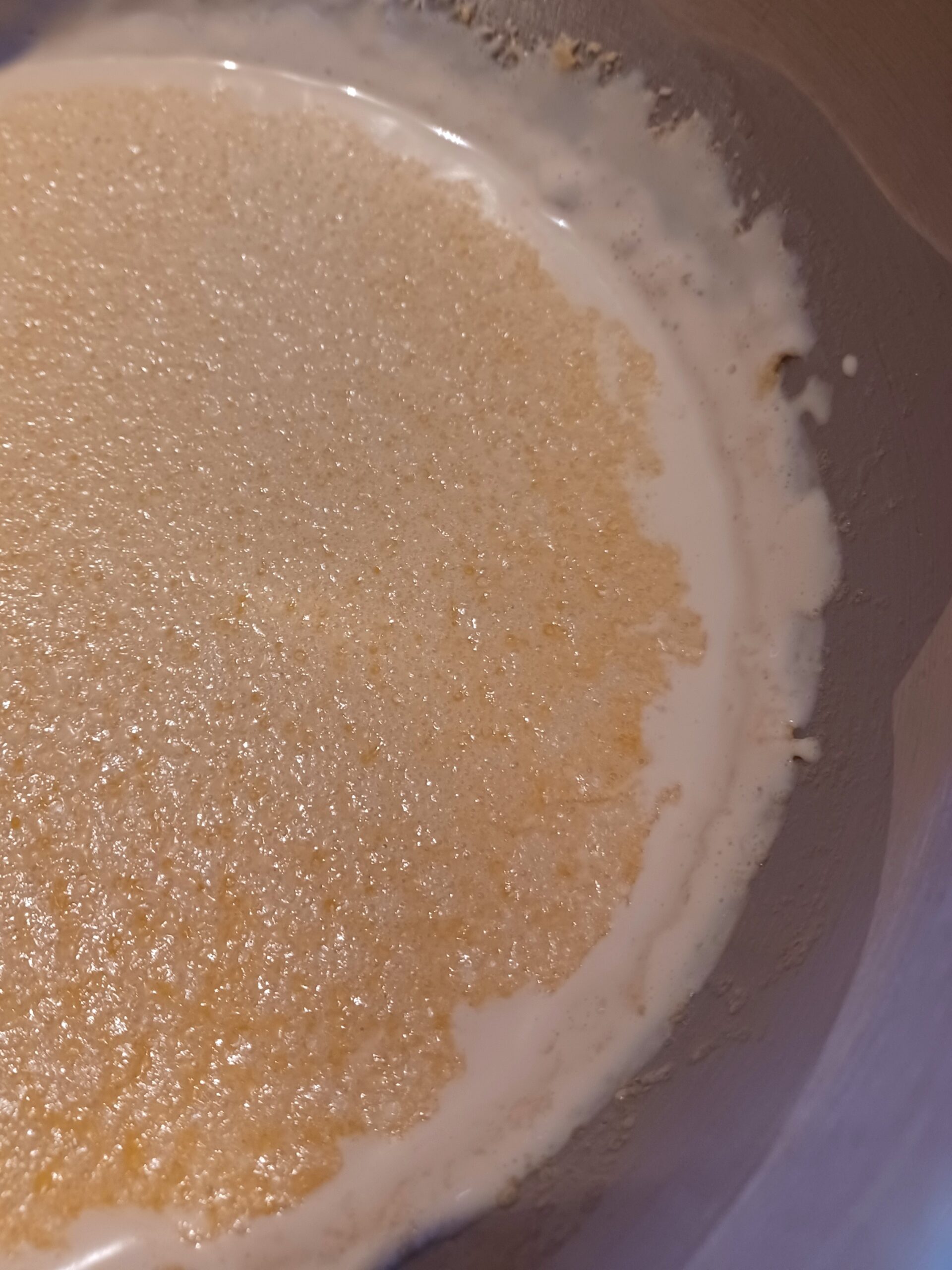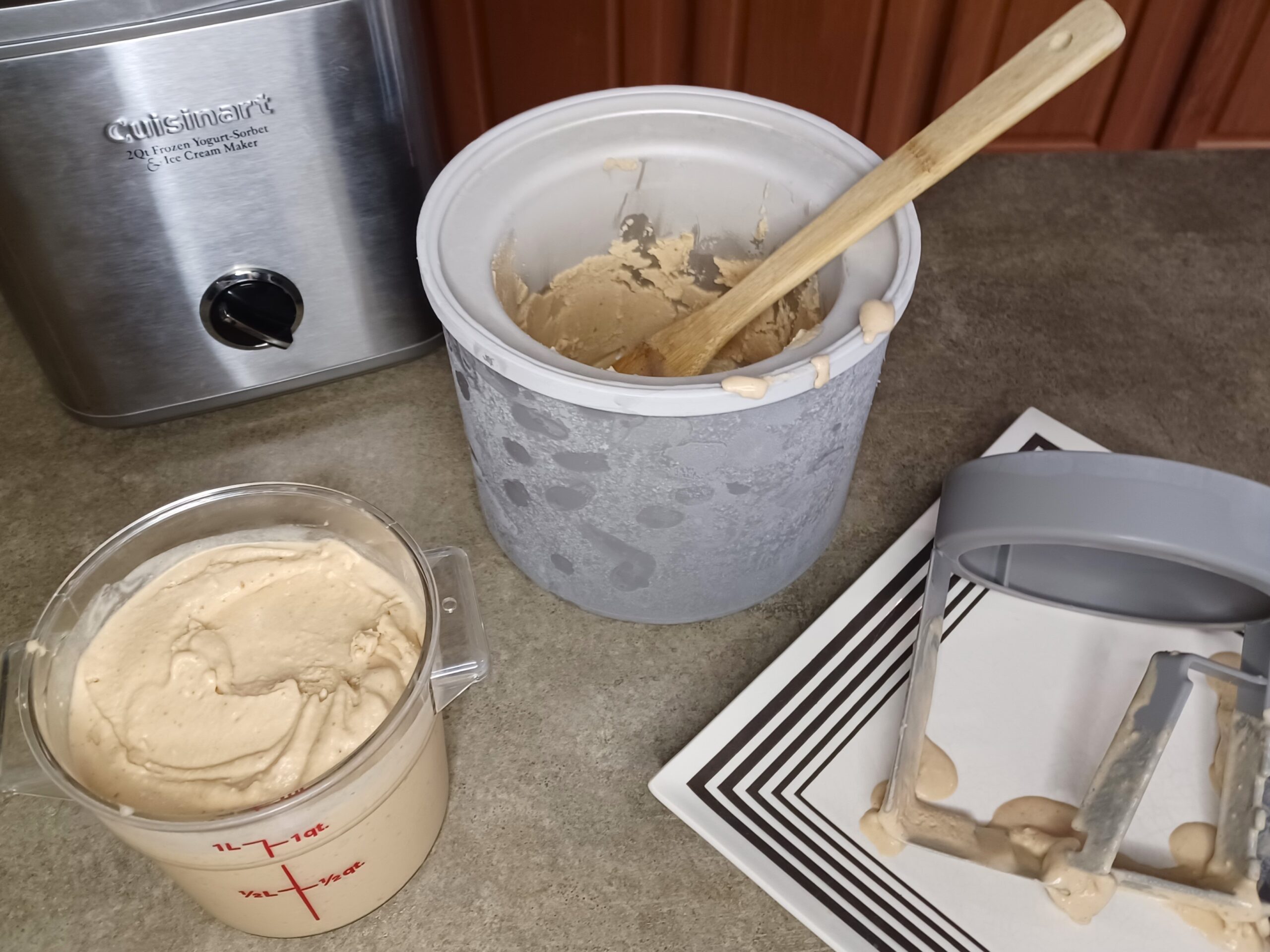I love cooking Middle Eastern dishes, so I always have pomegranate molasses in the house. It was only a matter of time before it made its way into Pomegranate Ice Cream.
Pomegranate molasses
If you cook and reduce pomegranate juice until it makes a thick syrup, you get pomegranate molasses. Interestingly, it appears in Middle Eastern recipes more often in savory meat or vegetable dishes than in desserts (at least as far as I’ve seen). As you’d expect, it brings sweetness and fruitiness to a dish. But it also has a very tart flavor and rich caramel notes from being cooked.
Pomegranate molasses comes in bottles sold in Middle Eastern markets and sometimes in your regular grocery store. I have enough experience with pomegranate molasses at this point that I have a favorite. My grocery store sells the Sadaf brand. Sadaf is okay, but I prefer the Cortas brand, which my local Middle Eastern markets sells and you can also buy on Amazon [affiliate link]. Cortas has more smooth, rich, fruity, and caramelized flavors with less tartness. Its flavor is more complex and less harsh, so I always use it when I can.

Protein powder options
This recipe is dairy free as written. I love using protein powders, especially collagen, in ice cream recipes because they allow you to reduce the sugar while maintaining a nice texture (more about that here). On the other hand, if you’re okay with dairy, feel free to swap the collagen powder for whey protein (unflavored, unsweetened). You could also substitute vegan protein powder, but I’ve had mixed results with that — they tend to produce a chalky texture. See more details in the notes below the recipe.
Blend, chill, churn, freeze, eat!
Pomegranate Ice Cream uses the simplest possible method: blend, chill, churn. Serve it plain or top with whipped cream, chocolate sauce, caramel, or graham crackers. I love to pair Pomegranate Ice Cream with homemade Magic Shell (recipe from The Minimalist Baker).
If you like fruity/tart ice cream flavors, give these a try as well:
- Lemon, Rosemary, and Olive Oil Ice Cream (dairy free)
- Lazy “Cherry Garcia” Ice Cream (lactose free)
- Ginger, Lemon, and Tahini Ice Cream (vegan)
- Grapefruit-Tarragon Sorbet (dairy free with a vegan option)
P.S. My favorite eggplant recipe
So you bought a bottle of pomegranate molasses, and you’re looking for something to do with it beyond ice cream. I have you covered! Here’s how to make my favorite eggplant dish (it’s vegan). It started from a recipe I read online, and I’ve tweaked it until I think it’s perfect.
You’ll need 1 eggplant, some sort of cooking oil or spray (or just olive oil to drizzle), salt, pepper, smoked paprika (sweet or hot to your taste), pine nuts (optional but recommended), and pomegranate molasses.
- 1. Preheat the oven 400 degrees.
- 2. Slice an eggplant into “slabs,” roughly 1/4 inch thick.
- 3. Spray a 9×13 casserole dish (or something similar) with cooking spray (I use avocado or olive oil) and lay out the eggplant in the dish, trying not to overlap too much.
- 4. Generously spray the eggplant with cooking spray/oil. Then sprinkle over it salt, pepper, and smoked paprika (sweet or hot, your choice). Also sprinkle with pine nuts if you have them (highly recommended!).
- 5. Bake the eggplant for about 20 minutes, then take it out and flip over the pieces. You don’t have to be precise — just stir them around and get most of them onto their other sides. Spray again with oil if they look dry.
- 6. Bake for another 10-20 minutes. The timing comes down to your personal preference for how brown and/or soft you want your eggplant.
- 7. When the doneness looks good to you, take the dish out of the oven and immediately drizzle the eggplant with 1-2 teaspoons of pomegranate molasses. To really dress it up, you can also drizzle a little yogurt or tahini sauce on top.
This dish works well alongside meat or fish, but also as part of a vegetarian meal. It’s excellent with pita.


Pomegranate Ice Cream (dairy free)
Makes ~ 1 quart
Ingredients
For the ice cream base
Instructions
-
BLEND
Place all ingredients into a blender and blend until smooth.
-
CHILL
Transfer to a container and chill in the fridge for 8 hours or overnight.
For a quicker chilling time, place the bowl containing your mixture in an ice bath (a larger bowl containing ice water) for a few hours. Stir the mixture occasionally. As the water in the ice bath warms up, pour off some water and add ice to keep the mixture chilling as quickly as possible.
Ideally, the mixture will be about 40 degrees when you churn it.
-
CHURN
If your ice cream base looks like it has separated while chilling (see picture), don't worry. Just give it a stir before you pour it into the machine to churn. It will come out fine.
Before you start churning, set up everything you'll need to quickly transfer the ice cream from the machine into a container for freezing. I use a knife to scrape down the dasher (or paddle) and a wooden spoon to scoop out the ice cream.
Set up your ice cream maker according to the manufacturer's directions. Pour your mixture into the ice cream maker and churn. In my machine the perfect churning time is 18 minutes, but your experience may vary.
The ice cream is ready when it has the consistency of soft serve and has started pulling away from the edge of the canister.
-
STORE
When the ice cream has finished churning, scoop it as quickly as possible into your storage container. Cover it with plastic wrap or parchment paper, if using. (Placing a sheet of parchment paper between the container and lid will help prevent frost, or you can press plastic wrap directly onto the surface of the ice cream.) Put the container in the freezer. The ice cream will be fully firm in a few hours.
Note
You can use any unflavored, unsweetened protein powder you want. Whey, collagen, and egg white work the best. Vegan protein powders can work too, but sometimes create a chalky texture. Because different protein powders have different textures, a cup of different powders may weigh different amounts. Weighing is the best method for ensuring you get the 65 grams the recipe calls for, but here are some estimates for using a cup measurement:
- 65 g collagen powder = 1/2 cup + 2 tablespoons
- 65 g whey protein = 1 cup
- 65 g egg white protein = 3/4 cup
- 65 g soy protein = 1 cup
Recommended equipment: (may include affiliate links)
- My ice cream maker (2 qt)
- Newer version of my ice cream maker (2 qt)
- Well-reviewed less expensive ice cream maker (1.5 qt)
- Insulated ice cream container
- Heat-proof spatula
- Immersion/hand blender
- Standard blender
- Ice cream scoop
- Measuring cups
Recommended ingredients (may contain affiliate links):




